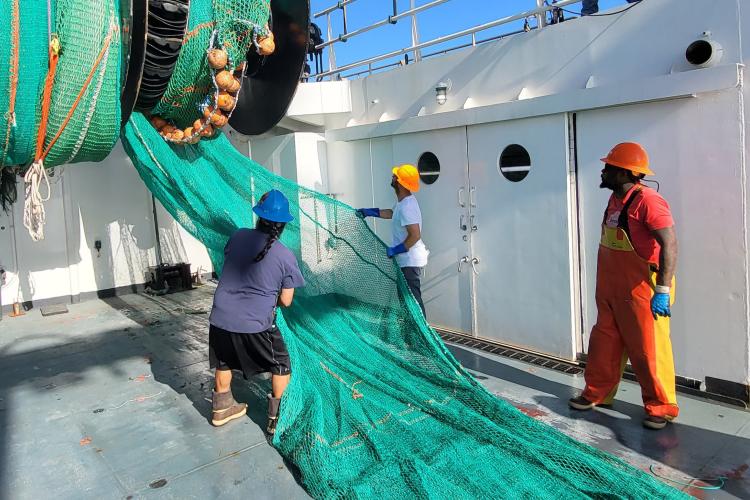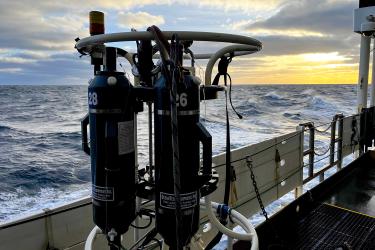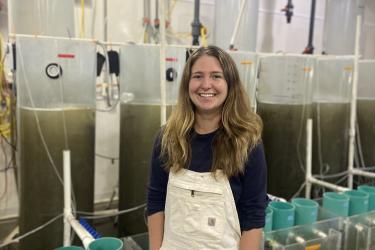I have been a member of the Northeast Fisheries Science Center’s net loft team since 2002. My prior experience included studying marine science and fisheries technology at the University of Rhode Island, followed by more than 20 years involved in commercial fisheries.
Understanding the Bottom Trawl
A typical bottom trawl may be loosely described as a system of webbing panels attached to a semi-rigid frame and catch containment. A vessel tows it along the seabed to capture fish and other organisms. By design, you can obtain degrees of variability by adjusting devices engineered into the trawl system. This can affect trawl behavior and the composition of the catch.
Standardization Methods from a Gear Perspective
Because we are using it as a scientific instrument, the science center’s 4 Seam, 3 Bridle Trawl must be maintained within specific parameters to ensure optimal and consistent performance. This is essential to maintain continuity in the trawl survey’s time series. At the net loft, the science center’s bottom trawl survey standardization protocol is our guideline for continuity.
Our main duty is maintaining the trawl gear including cod-ends and associated equipment such as trawl doors, rockhopper sweeps, wire legs, and hardware items. Net repair entails laying out a trawl on the work floor, examining it for damage, and performing the required repairs. An important tool we use is a gear usage and damage tracking system included in the survey database. The system records each net’s usage by number of stations deployed, any damage incurred, at-sea repairs, and any suspect items to prioritize for examination and repair. This allows us to identify the condition of trawls returned from sea and efficiently prioritize our repair efforts.
Prior to being deployed on the Henry B. Bigelow, a team of four individuals independent of the construction team performs a thorough inspection of each trawl. Inspectors measure and examine the trawl webbing, frame ropes, floats, and all aspects of the trawl and certify its accordance with established protocols. Any defects are noted and the net loft team remedies the issue. Upon passing inspection, we bundle, weigh, and attach a waterproof tag with the trawl number and date of inspection to the trawl. When the trawl successfully meets the criteria, it is certified and ready to use on the Bottom Trawl Survey.
We then load and transport the fishing equipment and install it onboard our research platform, the NOAA Ship Henry B. Bigelow.
Sailing as a Scientist and a Gear Technician
Sailing on the Bottom Trawl Survey as a gear specialist and a former commercial fisherman has afforded me a unique perspective. I am currently sailing as a member of the Ecosystem Survey Branch scientific team. Working closely with our chief scientist and watch chiefs, and interacting with vessel command, officers, and deck crews, has been a rewarding and enriching experience. I enjoy this exchange and the support and trust which furthers the team dynamic at sea.
While I primarily work on the team performing the processing and biological sampling, I also observe fishing operations via video monitor or on deck. In the event that a tear in the webbing or other damage occurs during a deployment, I may assist the deck crew with a repair. When a major tear occurs, we may have the ability to quickly switch to a new net and continue operations, allowing us to address extensive repairs ashore at the net loft.
You never know what may happen when towing the trawl. Things typically go off without a hitch, but I have seen a trawl come back completely inside-out with the net undamaged! While extremely rare, a strong current such as those on George’s Bank can cause this to happen.
We have just completed leg 1 of the survey without any significant net damage. Even so, after more than 100 tows we are changing out net 16 prior to starting leg 2 in the coming days. This ensures that we will begin afresh with an inspected 4 Seam Trawl to further our mission of collecting consistent data.






